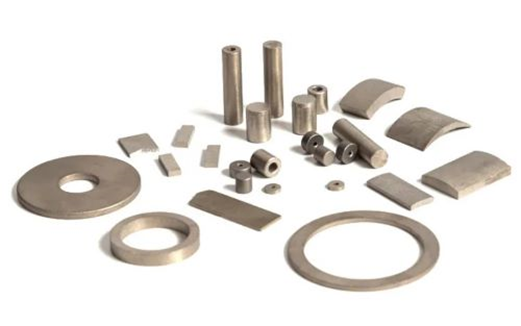Rare-Earth Recycling: A Comprehensive Guide
What Exactly Are Rare-Earth Elements?
Rare-earth elements are a group of seventeen metallic elements in the periodic table, comprising fifteen lanthanides plus scandium and yttrium. Despite their name, these elements are relatively abundant in the Earth's crust, but their dispersion means there are few places where they are concentrated enough to mine economically. REEs are pivotal in numerous high-tech and clean energy applications due to their unique magnetic, luminescent, and electrochemical properties.
Related Video: Rare Earth Elements Unveiled: Powering Modern Innovation
Why Are Rare-Earth Elements Considered Rare?
The term "rare" in rare-earth elements is somewhat misleading. It's not their existence that's rare but their availability in concentrated forms that make mining and extraction economically viable and environmentally sustainable. Their scattered distribution, coupled with the technical and environmental challenges of extraction, renders them "rare." This scarcity, especially outside of China, which dominates the rare-earth market, poses significant strategic vulnerabilities for other nations reliant on these critical materials.

Why Is Rare-Earth Element Recycling Crucial?
Recycling rare-earth elements is crucial for several reasons. It lessens environmental degradation, stabilizes the supply chain, and provides a foundation for sustained economic and technological progress.
1. Mitigating Supply Risks
The global reliance on a handful of countries for the supply of REEs introduces significant risks, including supply chain disruptions and price volatility. Recycling can diversify the supply sources, reducing dependence on imports and enhancing material security.
2. Environmental Stewardship
The mining and refining processes of REEs have substantial environmental footprints, leading to deforestation, soil and water contamination, and radioactive waste. Recycling aims to lessen these impacts by providing a more sustainable source of materials.
3. Economic Viability
As the quality of ore deposits declines and extraction costs rise, recycling can become an economically attractive alternative, potentially stabilizing market prices and ensuring the availability of critical materials for future technologies.
Related Reading: Recycling of Rare Earth Elements
What Challenges Do We Face in Rare-Earth Element Recycling?
Recycling rare-earth elements is fraught with challenges.

- The primary hurdle is the technical difficulty involved in separating and refining the elements from complex electronic devices. This process is often costly and requires sophisticated technology.
- Additionally, the economic viability of recycling is contingent on the fluctuating prices of rare-earth elements, which can sometimes make the process less financially attractive than mining new materials.
- Environmental and regulatory challenges also play a role, as does the need for a comprehensive collection and recycling infrastructure.
How Can We Effectively Recycle Rare-Earth Elements?
To recycle rare-earth elements effectively, a diverse array of methods is essential. Innovations like hydrometallurgy, pyrometallurgy, and bioleaching provide valuable techniques for more efficient REE recycling, driving forward numerous technical and scientific advancements.
1. Separation Technologies for REE Recycling
Separation technologies are critical in the recycling of rare-earth elements (REEs) due to their similar chemical properties, which make their separation and purification challenging. Here are some of the main technologies used:
- Solvent Extraction: This is a widely used method for separating REEs from each other and from other metals. It involves dissolving the metals in an aqueous solution and then selectively transferring them to an organic solvent using a chemical reagent. The process is highly efficient but requires the use of large volumes of chemicals, raising environmental and safety concerns.
- Ion Exchange: Ion exchange employs resins or other materials that can selectively capture rare-earth ions from a solution. The REEs are then eluted (washed out) from the resin with a solution that typically has a different pH or contains a different ion that displaces the rare-earth ions. This method is beneficial for its specificity and lower environmental impact compared to solvent extraction.
- Electrochemical Deposition: This involves the use of electrical currents to deposit rare-earth metals from a solution onto a cathode. This method can be highly selective and efficient, allowing for the recovery of pure rare-earth metals. It is especially useful for recycling rare earths from waste where they are already in an ionic form, such as in some industrial effluents.
2. Bioleaching in Rare-Earth Recycling
Bioleaching represents an innovative and environmentally friendly approach to extracting REEs from waste materials. It uses microorganisms, such as bacteria and fungi, which can solubilize metals through the production of organic acids, redox reactions, or by creating complexes.
Bioleaching is particularly attractive for its low energy requirements and reduced environmental impact compared to traditional methods. However, its application to REE recycling is still in the early stages of research and development, with challenges related to process efficiency, speed, and the ability to target specific REEs. [1]
3. Recycling Rare-Earth Elements from Permanent Magnets and Batteries
Permanent magnets and batteries are two of the most significant sources of REEs in the recycling stream. [2] Both applications use rare earths for their unique magnetic and electrochemical properties:
- Permanent Magnets: Recycling REEs from permanent magnets, such as those containing neodymium (Nd), praseodymium (Pr), and dysprosium (Dy), involves demagnetizing and then dissolving the magnets to allow for the separation and purification of the REEs. Hydro metallurgical and pyro metallurgical methods are used, sometimes in combination, to achieve efficient recovery.
- Batteries: Although less common than in magnets, REEs like lanthanum (La) are used in nickel-metal hydride batteries. Recycling these materials typically involves mechanical processing to separate battery components, followed by chemical processing to recover the rare earths. The development of direct recycling methods, which aim to recover and reuse battery materials without breaking them down into their chemical components, is also underway for some battery types.
Below is a summary table that outlines the key technologies used in REE recycling. Hope that you can learn about their pros and cons and get a clearer comparison. For more information, please check Stanford Magnets.
Table 1. Rare-Earth Element Recycling Methods
|
Technology |
Description |
Pros and Cons |
|
Solvent Extraction |
Uses chemical reagents to transfer REEs from an aqueous solution to an organic solvent. |
Pros: Highly efficient for separating REEs. Cons: Requires large volumes of chemicals, raising environmental and safety concerns. |
|
Ion Exchange |
Employs resins to capture rare-earth ions from a solution, which are then eluted with a specific solution. |
Pros: Specific and has a lower environmental impact than solvent extraction. |
|
Electrochemical Deposition |
Uses electrical currents to deposit REEs onto a cathode from a solution. |
Pros: Highly selective and efficient; useful for recycling REEs in ionic form. |
|
Bioleaching |
Utilizes microorganisms to solubilize metals from waste through organic acids, redox reactions, or complex formation. |
Pros: Environmentally friendly, low energy requirements. Cons: Still in early research stages; challenges with efficiency, speed, and targeting specific REEs. |
Conclusion
As the demand for rare-earth elements continues to grow, the importance of recycling these materials cannot be overstated, serving not only to diminish environmental impacts and reliance on mined resources but also to fortify the supply chain for pivotal technologies. By employing a variety of techniques such as advanced separation methods, bioleaching, and specific recovery processes for magnets and batteries, efficient recycling can be done for a sustainable future.
Reference:
[1] Emmanuel Yaw Owusu-Fordjour, Xinbo Yang, Bioleaching of rare earth elements challenges and opportunities: A critical review, Journal of Environmental Chemical Engineering, Volume 11, Issue 5, 2023, https://www.sciencedirect.com/science/article/pii/S2213343723011521
[2] Koen Binnemans, Peter Tom Jones, Bart Blanpain, Tom Van Gerven, Yongxiang Yang, Allan Walton, Matthias Buchert, Recycling of rare earths: a critical review, Journal of Cleaner Production, Volume 51, 2013, Pages 1-22, https://www.sciencedirect.com/science/article/pii/S0959652612006932












